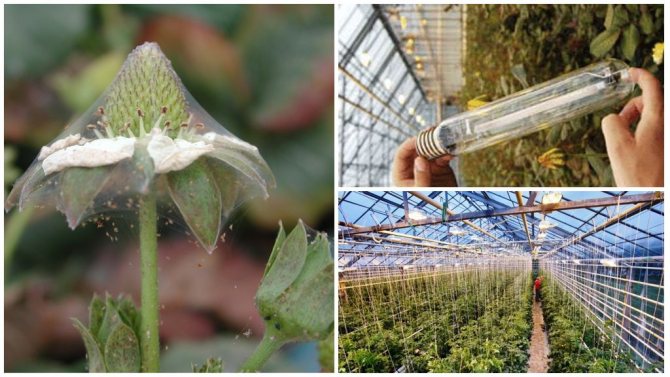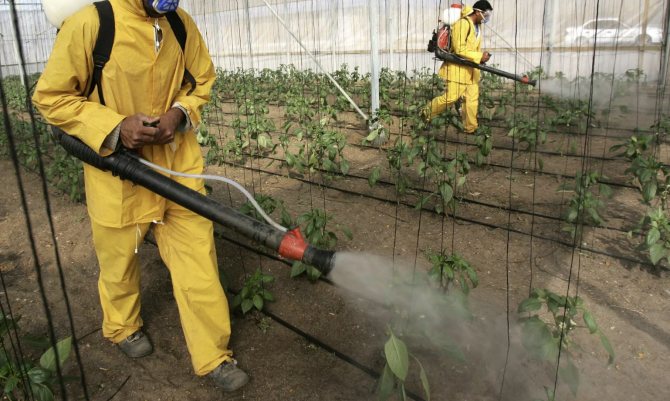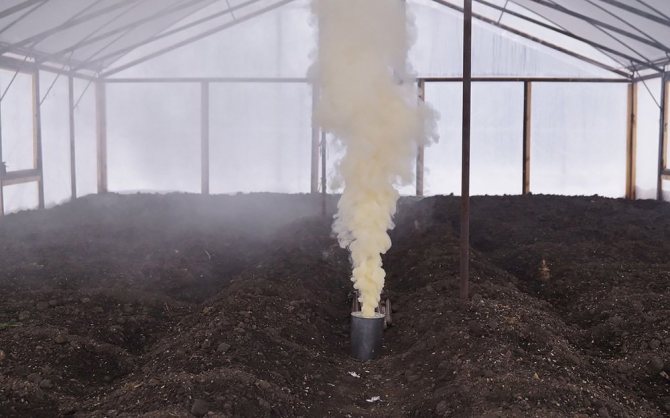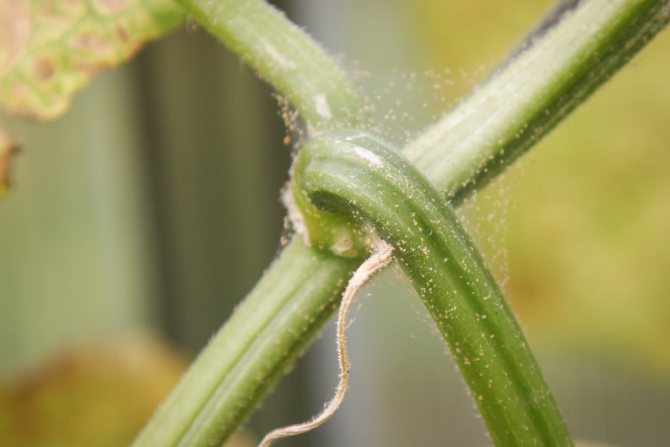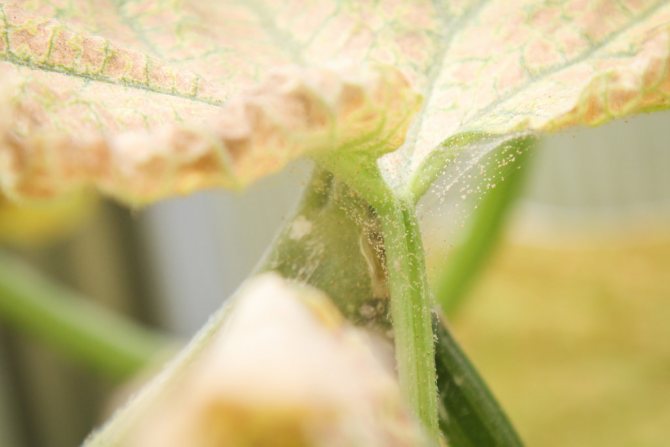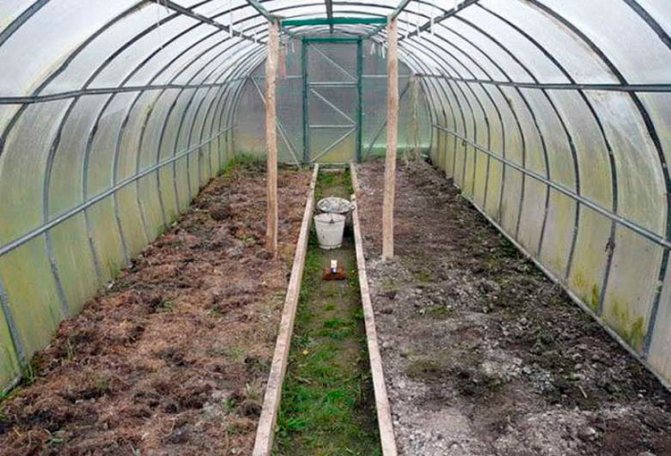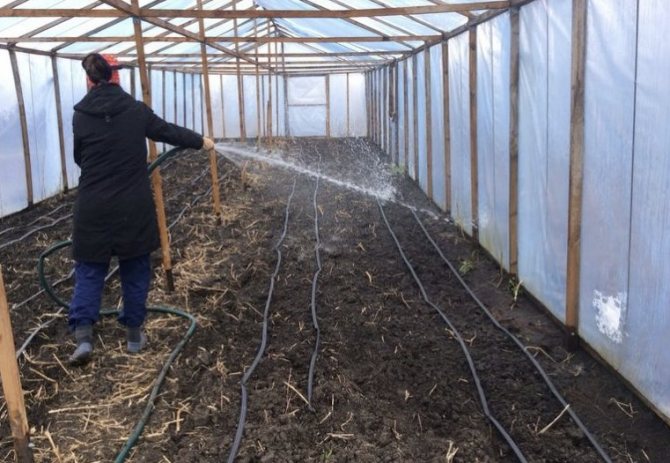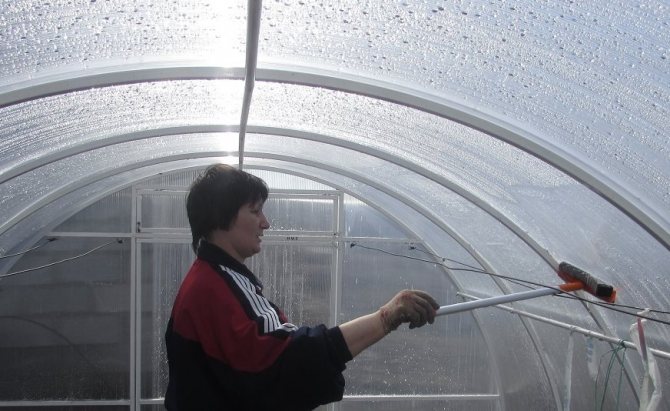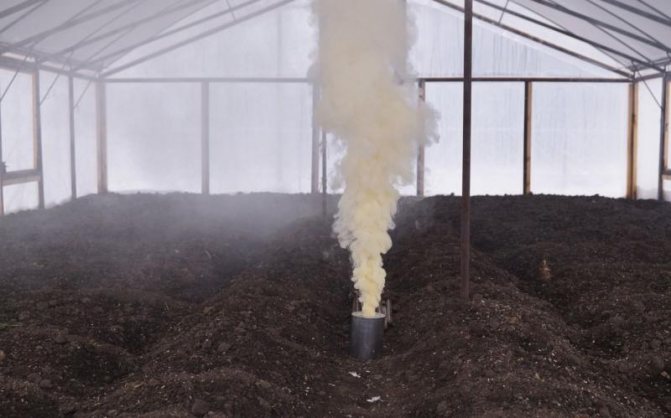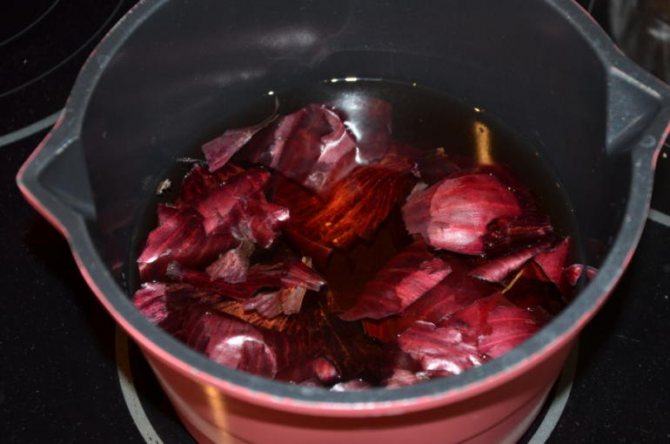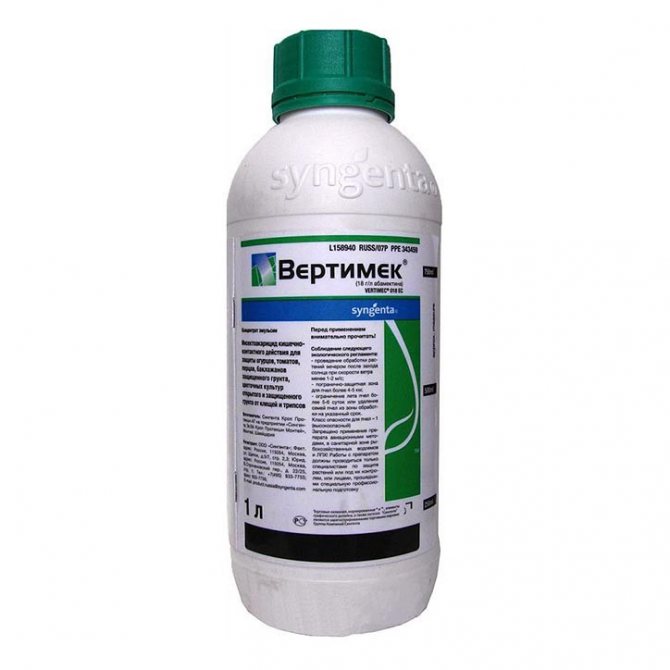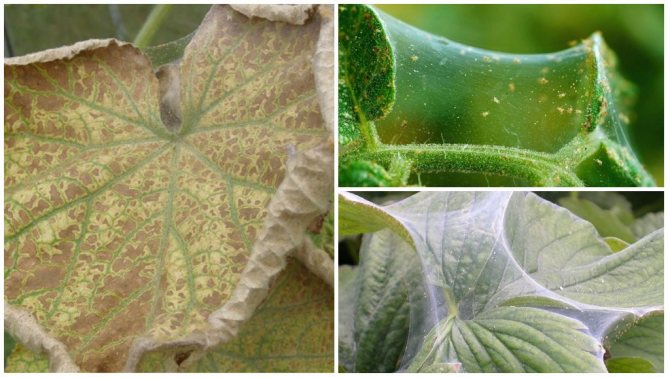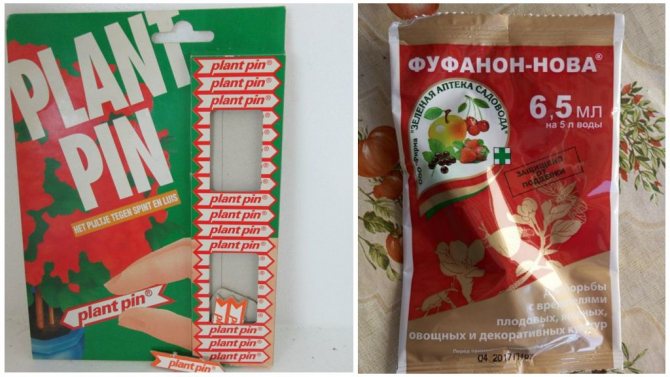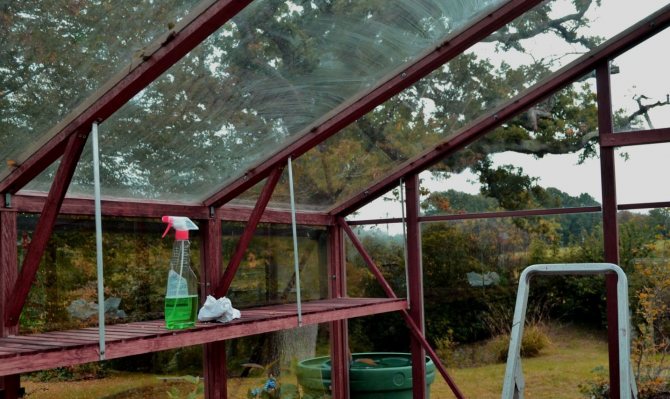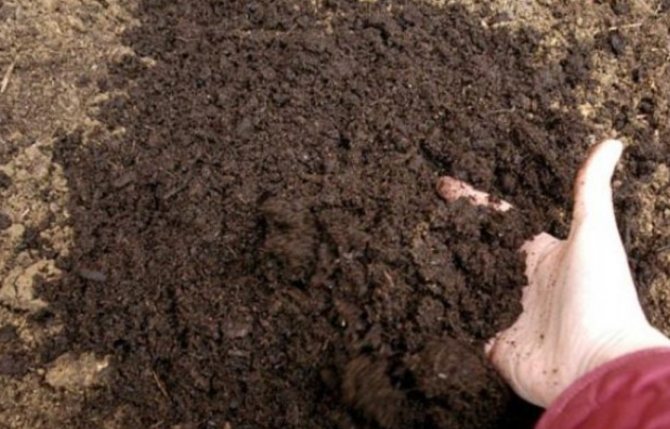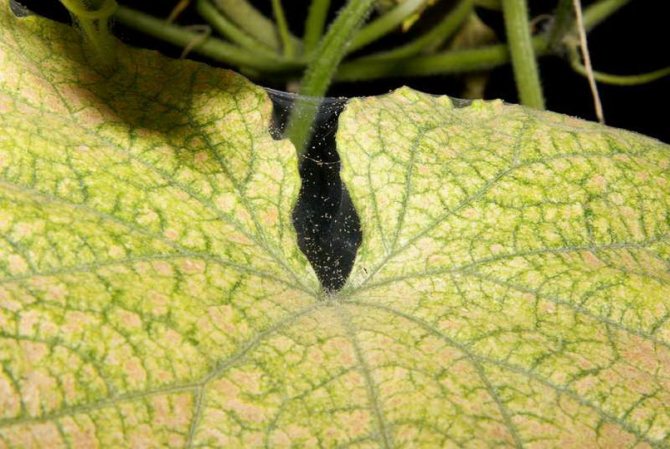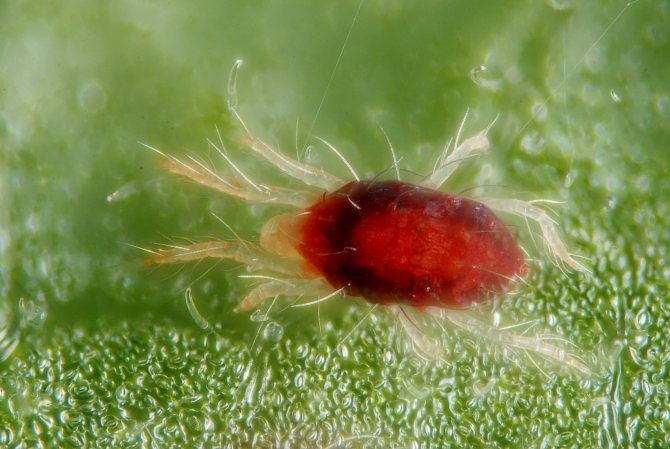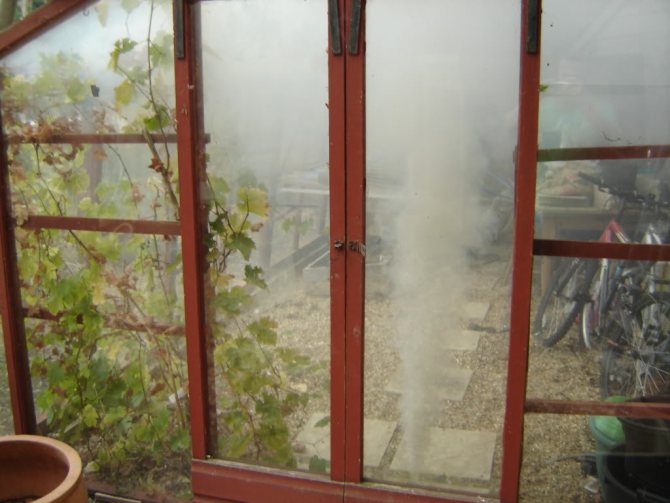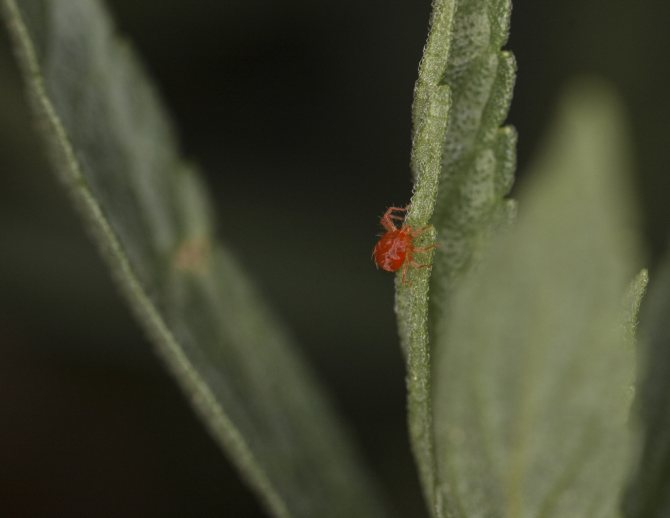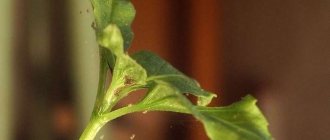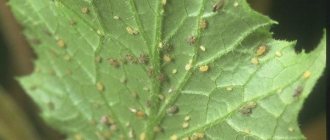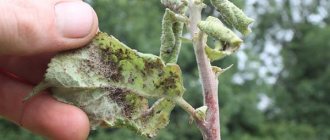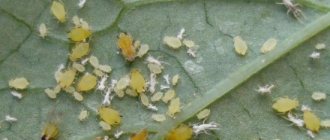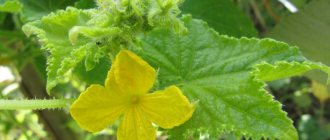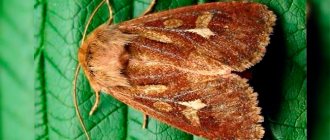Methods and methods of struggle
Spider mite: how to deal with it? How to get rid of this malicious pest? What are the methods involved in dealing with it?
Chemical
How to kill a spider mite? There are chemicalswhich are called acaricides. They act against all vegetarians, including all types of spiderwebs.
Some can also work against insects, they are universal drugs and are called insectoacaricides.
Other remedies have a narrowly targeted effect and work only to kill ticks - phytophages... These are specific acaricides.
You can view a list of effective acaricides and insectoacaricides for combating spider mites here.
Biological
Includes several different ways to get rid of ticks:
- The use of acaricidal drugs biological nature... They are made from fungi that live in the ground and are detrimental to ticks. These drugs are especially valuable for their selective toxicity and environmental safety.
- Using natural enemies herbivorous mites. First of all, these are predator mites. They eat vegetarians without damaging any plants.
- Landing repellent plants near possible victims of spider mites. They have a scent that is disgusting to ticks.
People's
How to kill a spider mite? The most ancient way to get rid of any pests. Food products are used, decoctions and herbal infusions and other plants medical supplies.
The method is good because practically does not need material investments, since funds are used that are always in the house.
If you are impressed by this particular method, read the article "Folk remedies for combating spider mites." It describes in detail the most effective and affordable preparations and recipes for their manufacture, thanks to which you will learn how to remove spider mites forever.
Agrotechnical
Creation of favorable conditions for plants and unfavorable for ticks and other pests.
Any grower uses this method all the time. to prevent the onset of pests and diseases, increasing the yield and decorative qualities of plants.
The following agricultural techniques are very useful against ticks:
- Digging soil in spring and autumn.
- Cleaning of crop residues (tops, roots, dried inflorescences, fallen leaves, rotten fruits and vegetables, etc.) and their subsequent disposal.
- Weed control constantly and in a timely manner, burning them or feeding them to livestock.
- Regular spraying and watering crops - mites do not tolerate moisture.
Reasons for infection

Spider mite infested cucumbers
The main reason for the appearance of a pest in a greenhouse is considered to be an increased temperature and low humidity in the room.
This usually happens if the temperature in the greenhouse reaches + 30 ° C or more. That is why the tick often infects plants growing in the southern regions of our country.
In addition, common causes of the appearance of a tick are:
- non-compliance with crop rotation;
- soil contaminated since autumn;
- wooden structures of the greenhouse, previously infected with a tick.
Fatty plants are most to the taste of the pest, which gain green mass to the detriment of fruits. Most often, this process occurs when there is an excess of nitrogen fertilizers in the soil. This must be strictly monitored when planting plants in the ground.
Also, the insect is able to settle in old dried cucumber leaves. In the spring, as soon as positive temperatures come, females move to young shoots and begin to actively lay eggs, multiplying the population at times in the shortest possible time.
Most often, the primary lesions by the pest occur on the upper leaves, but then the adults move to the lower tops. This makes them almost invisible to the naked eye of the gardener. The fact is that usually less attention is paid to the lower leaves and the pest goes unnoticed for a long time.
Tillage
How to get rid of spider mites permanently? How and with what to treat the soil from spider mites? In addition to spraying with chemicals and carrying out various activities, it is necessary treat the soil under the plants... Why?
At certain points, ticks hiding in the soilfalling into diapause. They greatly slow down all physiological processes in anticipation of favorable conditions for life. This happens when the daylight hours decrease, the humidity is high and the air temperature drops.
If you do not cultivate the land, the mites will come out and continue their destructive activity.
For processing, you can use any acaricide... It is diluted in water according to the instructions and all the soil is well spilled with this solution.
Another way is to use chopsticksthat are buried in the ground. During watering, they dissolve and the poison spreads in different directions, poisoning the soil. In addition, it gets inside the plant and the sap becomes poisonous.
Many manufacturers produce a "2 in 1" product - it includes not only a poisonous substance, but also a complex of fertilizers. Among these sticks, the most famous are Plant Pin, Etisso, Substral, polish sticks "Green house".
Folk recipes
Folk remedies are inferior in effectiveness to chemical and biological preparations. However, with a small scale of damage, they can be very effective. The main disadvantage is the need to prepare mixtures and carry out several treatments.
The following recipes are popular:
- Grind 400-500 g of dandelion roots or leaves, pour 10 liters of water at room temperature. Infected plants are treated with the prepared solution. As a preventive measure, irrigation is carried out when the first leaves appear.
- Insist 350 g of tobacco and 10 liters of water for a day, strain, add the same amount of liquid and rub 50 g of laundry soap.
- Chop 250 g of garlic in a convenient way, combine with 2 liters of water. Filter after 5 days. To prepare a working solution, mix 60 ml of garlic tincture, 50 g of soap and 10 liters of water.
- Put tomato or potato tops tightly in a bucket, pour warm water. After 5-6 hours, the mixture is ready for treating plants from spider mites.
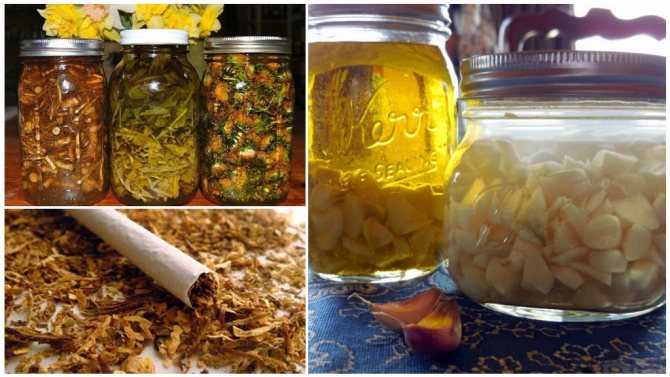

Folk recipes for spider mites
Greenhouse fight
How to deal with spider mites in a greenhouse or greenhouse?
In general, the methods of struggle do not differ from the methods of struggle in open areas (in kitchen gardens, orchards and front gardens). However, there are some nuances... How to get rid of spider mites in a greenhouse? So spider mite in the greenhouse - control measures:
- If there are several greenhouses, the distance between them should be not less than a meterso that the ticks cannot move from one greenhouse to another.
- If plants allow - keep inside high humiditywhich spider mites cannot tolerate.
- Plants must be exposed careful inspection every 3-4 days, the affected must be immediately removed from the greenhouse and burned.
- It is not necessary to immediately launch with "heavy artillery", i.e. use strong pesticides. Indoors, you can try first "Smoke out the pests", setting fire to briquettes of sulfur or carrying out dusting with it.
- It can be very effective to use predatory mites, and it is in greenhouses where it is much easier to catch vegetarians.
- To treat a greenhouse from a spider mite, it is necessary to use large doses and concentrations of any acaricides, and carry out the procedure several times, in order to precisely destroy the entire population without a trace. Otherwise, the remaining ticks multiply quickly and take revenge with an excellent appetite, as a result of which you won't get the harvest.
Processing in autumn
How to treat a greenhouse from a spider mite? It is recommended not to treat the soil with chemicals, but completely replace fresh.
Processing a greenhouse from a spider mite means that the greenhouse itself (glass, frame, film) is necessary disinfect after a spider mite. It is most convenient to do this after removing the old land. For disinfection, you can use 5% copper sulfate, 4-6% aqueous solution of bleach (400-600 g of dry lime per bucket of water).
Can also be applied sulfur checkers for fumigation, which may be even more effective than washing. After all, poisonous gas penetrates where the aqueous solution does not reach.
But most correct of all combine water and fumigation treatment - in this case, sulfur combines with water molecules and forms sulfurous and sulfuric acids. They are able to completely destroy not only ticks and harmful insects, but also all pathogenic microorganisms - fungi, bacteria, viruses.
Signs of pest damage
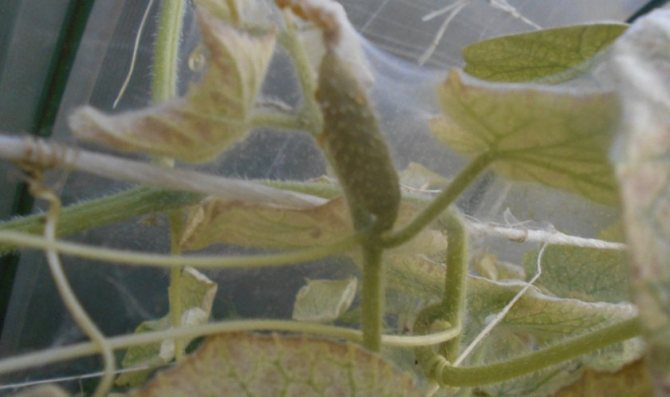

The presence of a light web indicates the appearance of a parasite
Cucumber leaf cells are the main food for spider mites. The plant begins to weaken, losing its defenses, and becomes vulnerable to many secondary diseases. Often thereafter, infection with gray mold spores occurs.
How to get rid of red spider mites?
Red spider mite - photo:
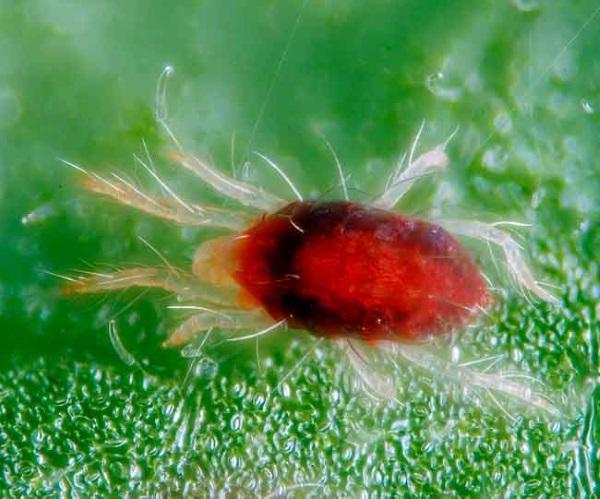

The red tick is one of the most frequent spider mites, which has an inordinate appetite and omnivorousness. It can feed on most cultivated plants, contributing to their early death.
Find it almost impossible, despite the bright red color of the body, since the size is 0.3-0.5 mm. The species is distinguished by increased fertility, rapidly increasing its population and migrating to all surrounding plants. To defeat this glutton before he destroys all the plants, it is recommended to use strong means.
First of all, tear off the most affected leaves and shoots, burn them. Wash the bushes or wipe with a damp sponge, having wet it before in soapy water (about how to get rid of spider mites with soap and other folk remedies, read here). For its preparation, you can use laundry soap or liquid detergents such as "Fairy". This will not only help clear the cobwebs, but also reduce the number of pests.
Then leave the plant alone for a couple of hours, preparing during this time the preparation in the form working solution... To kill red mites, you can use:
- Insectoacaricides - Fitoverm, Dursban, Akarin, Vertimek, Aktellik, Aktofit, Oberon, Kleschevit, Agravertin, Talstar.
- Specific acaricides - Floromite, Apollo, Envidor, Flumite, Omite 57, Borneo, Sunmayt, Neoron, Nissoran.
Having received a good result and being pleased with it, do not fold your hands! Processing must be carried out several times in order to destroy resistant ticks and possible offspring.
Read more about the use of acaricides and insectoacaricides to combat spider mites here.
Appearance and signs of infection
The parasite is not characterized by large dimensions, the length of the oval body barely reaches 0.5 mm. In the spring-summer period, the color is yellow, greenish. In late August, early autumn, females turn orange, red flowers. The spider mite does not belong to insects, it is arachnid. As befits representatives of arachnids, adults have 4 pairs of legs.
On a note!
Only fertilized females leave for the winter. These individuals are very resistant to low temperatures and survive even if the thermometer reaches -25 ° C.
They overwinter in plant debris, at temperatures from + 15 ° C they leave their shelters. They settle on the underside of the leaf plates. Females begin to lay eggs, which they cover with cobwebs. Fertility of each individual is 140-150 eggs, full development from embryo to imago is 7-20 days, so the spider mite colony grows rapidly. During the season, 2-3 generations are generated; in heated greenhouses, pests reproduce all year round.
Arachnids feed on plant juices. You can suspect that spider mites have appeared in the greenhouse by the following characteristic features:
- In places of punctures on the plant, dark spots appear. The mites suck up the chlorophyll grains, causing the diseased leaves to become discolored and appear marbled.
- Subsequently, the leaf plates become brown, dry out and die off.
- The presence of a silky web.
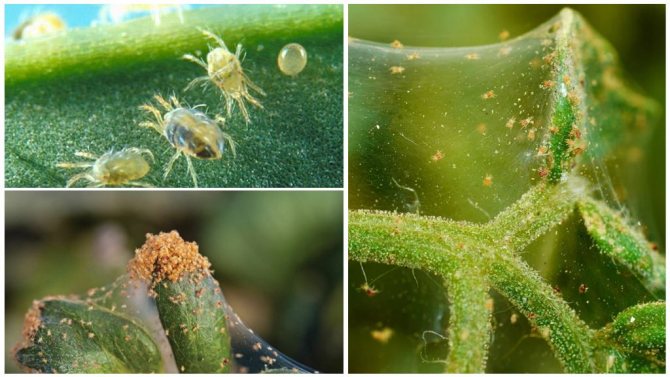

Spider mite
On a note!
Favorable conditions for the development of a spider mite are a temperature of + 30 ° C and a humidity not higher than 50%.
Prevention
Prevention of the appearance of a spider mite includes the following measures:
- Constant timely weed cleaning with their subsequent disposal.
- Alternation different types of plants in one place. After vegetables that the tick simply adores, those that it cannot stand should be planted.
- Always apply possible agricultural measures to any plants to create conditions unsuitable for the life of ticks. It is especially important to maintain a constant high humidityby spraying or watering on top of the crop.
- Inspect plants regularly, in order to detect in time traces of the presence of small pests - a cobweb and colorless dry dots on leaves and shoots.
Pest-resistant cucumbers
Breeders have developed varieties that are immune to spider mites and diseases. The early ripening hybrid "Benefis" is unpretentious to the conditions of care, is not afraid of parasites and fungi. A productive plant actively bears fruit before cold weather and pleases farmers with delicious cucumbers.
The Rodnichok variety loves abundant irrigation and a lot of light. Its characteristic is resistance to pests and diseases. The foliage and whips of the bush have an unpleasant aroma for spider mites, scaring them off the garden. Subject to the rules of agricultural technology on such cucumbers, you can get an excellent harvest.
The universal hybrid "Goosebump" grows well both in the greenhouse and in the open field. A productive species with strong immunity from parasites and fungal diseases, it shows good results with minimal maintenance. Fragrant fruits with a pleasant taste are used fresh and canned.
Movement and stay of arachnids
In winter, the female tick with the eggs laid by it lies in the ground and under the bark of trees. With the arrival of spring, they move to unharvested nearby weeds, and later to plants.
The spider mite is able to move actively. Even with a usually sedentary lifestyle, as he eats up food supplies, he goes to look for a new habitat. Pests move with the help of their webs, which are carried by the wind, or slowly crawl over short distances.
Indoor flowers and greenhouse plants can become infected with pests from new seedlings, soil. Insects even get into the apartment from things, shoes, and independently penetrate through an open window.
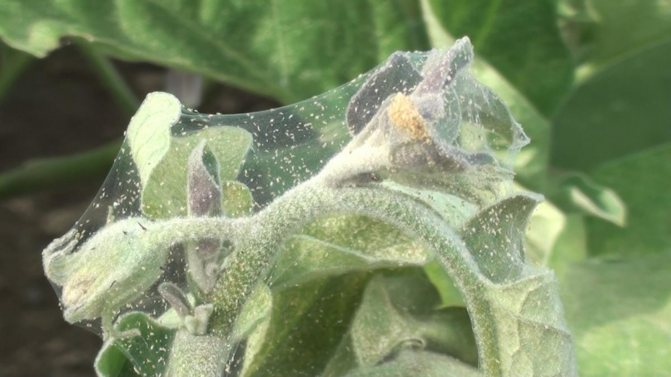

Parasites are introduced into the greenhouse, staying on the gardener's clothes, the hair of a cat that accidentally ran into the building, with seedlings. It is almost impossible to avoid insects entering the greenhouse. It is difficult to deal with them, but if measures are taken in a timely manner, you can grow plantings without fear of an invasion of pests.
At the first stage of being in the greenhouse, it is very difficult to find them. If you look closely, you can see whitish dots on the back of plant leaves, usually along the main vein. Over time, these marks will turn yellow and discolored. But after only 8-10 days, you can see parasites scurrying along the leaves of cucumbers or tomatoes.
After a while, the plants will be covered with areas braided by a thin web - it is in these places that colonies are arranged and pests actively reproduce, and then spread to other plants. Interspersed with white dots on the leaves is a sign of the existence of parasites in the greenhouse.
Sometimes the cobweb may be absent altogether, if there are not too many insects. Plants that are located at the edges of the passage are the first to suffer, they are more susceptible to tick attacks from the street.
You need to know that a spider-like creature is not dangerous to humans, does not bite and is not a carrier of any diseases. Dangerous only for crops.

